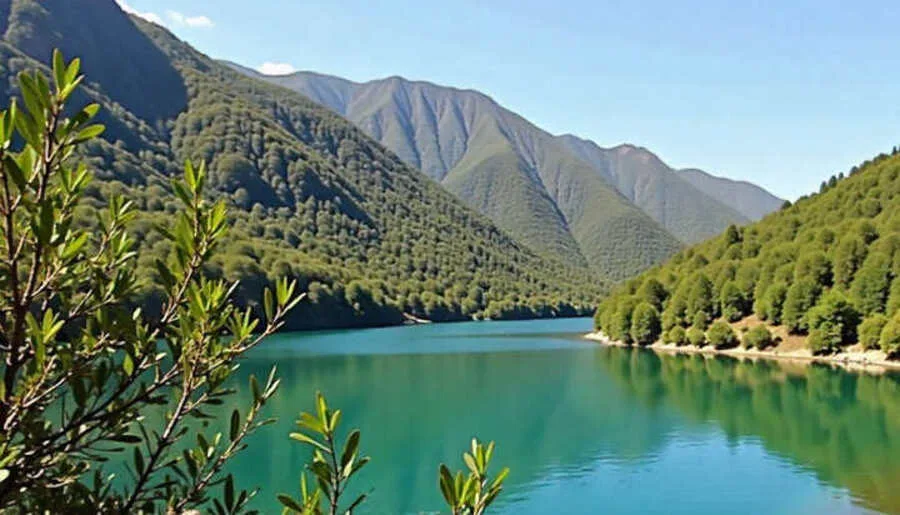Published on
November 6, 2025

Turkey’s dedication to sustainable tourism and the preservation of its rich cultural heritage has earned the country international acclaim, with four villages—Akyaka, Barbaros, Anıtlı, and Kale Üçağız—being named among the world’s Best Tourism Villages for 2025 by the United Nations. These villages stand as exemplary models of eco-tourism, where visitors can experience the harmonious blend of natural beauty, traditional lifestyles, and sustainable travel practices. By embracing both the past and the future, these destinations offer a unique opportunity to explore Turkey’s diverse landscapes, cultural treasures, and commitment to responsible tourism. As the UN highlights these villages for their dedication to preserving local traditions while promoting environmental sustainability, they represent a growing trend of destinations where travelers can enjoy authentic, eco-conscious experiences.
Akyaka: A Seaside Retreat that Embraces Nature and Slow Living
Located along the scenic Aegean coast, Akyaka is a peaceful village that offers visitors an idyllic escape amidst breathtaking landscapes. Surrounded by pine forests and nestled by the sparkling waters of the Azmak River, Akyaka has become a popular destination for nature lovers and outdoor enthusiasts. The village is ideal for activities such as windsurfing, kitesurfing, hiking, and cycling, making it a prime spot for eco-tourism.
But Akyaka is more than just a haven for adventure; it is a place where the essence of traditional Turkish architecture thrives. The village is renowned for its Ula-style houses, which reflect Ottoman-era design principles and harmonize beautifully with the surrounding landscape. Akyaka’s commitment to sustainable living is evident through its membership in the Cittaslow network, which promotes “slow living” and sustainable tourism. In addition to its outdoor activities, Akyaka offers a delightful culinary scene, with an emphasis on fresh, local seafood and regional specialties. This peaceful village encourages visitors to slow down, take in the beauty around them, and embrace a more relaxed way of life.
Barbaros: A Village of Tradition, Taste, and Hospitality
Barbaros, situated near the charming coastal town of Urla in İzmir Province, invites visitors to experience the richness of Turkish village life, from its traditional architecture to its thriving local food scene. Known for its characteristic stone houses and narrow, winding streets, Barbaros exudes a timeless charm that draws travelers seeking authenticity and connection with local culture.
One of the main attractions of Barbaros is its food. The village is known for its “Çat Kapı” tradition, where visitors are welcomed into local homes to sample homemade dishes made from fresh, locally sourced ingredients such as olive oil, vegetables, and herbs. Barbaros also boasts a strong presence of artisanal crafts, with handmade goods such as textiles and pottery sold by local artisans. The nearby Urla Vineyard Route adds another layer to the village’s appeal, as the region’s emerging wineries attract wine connoisseurs from around the world.
In the spring, the village celebrates the Oyuk (Scarecrow) Festival, where colorful scarecrows are displayed in the streets, reflecting the village’s agricultural traditions. Barbaros offers visitors a truly immersive cultural experience, where they can not only sample local food but also engage with the warm and welcoming people who call this village home.
Anıtlı: A Historical Crossroads of Religion and Culture
Anıtlı, nestled in the heart of Mardin Province, is a village that speaks to the multicultural and religious tapestry of southeastern Turkey. Anıtlı is home to a diverse array of communities, including Assyrians, Christians, Yazidis, and Muslims, who have lived in harmony for centuries. This rich cultural heritage is reflected in the village’s religious landmarks, including the Church of the Virgin Mary and several ancient monasteries, which continue to serve as places of worship.
Anıtlı offers travelers a deep dive into the history and spirituality of the region. Visitors can attend religious services at the church, experience local festivals, and explore the surrounding area’s remarkable religious heritage, which includes the wider Tur Abdin region, known for its ancient Christian roots. The village’s culinary offerings, which include unique dishes such as black chickpea stew and almond desserts, provide another window into the cultural richness of this historic area.
For those interested in learning more about the intersection of religious and cultural history, Anıtlı is a fascinating destination. The region has been included on the UNESCO Tentative World Heritage List due to its significant role in the early Christian world, and the village itself offers visitors a chance to witness traditions that have endured for generations.
Kale Üçağız: A Hidden Gem on the Turkish Riviera
Located on the idyllic Turkish Riviera, Kale Üçağız is a small, tranquil village that combines stunning natural beauty with a wealth of historical significance. Known as the “Castle Village,” Kale Üçağız is famous for its ancient ruins, which date back to the Lycian period. The village’s serene atmosphere, with olive tree-covered hills and a small harbor, makes it an ideal destination for those seeking peace and solitude.
One of Kale Üçağız’s standout features is its proximity to the sunken city of Simena, located on nearby Kekova Island. Visitors can explore the submerged ruins by boat or kayak, creating a unique opportunity to experience both history and nature in one place. The village is also a gateway to the Lycian Way, one of the most famous long-distance hiking trails in the world. From Kale Üçağız, visitors can embark on scenic hikes along the rugged coastline, explore the ancient ruins of Lycia, or simply relax and enjoy the crystal-clear waters of the Mediterranean.
Kale Üçağız offers travelers a rare chance to experience the quiet beauty of the Turkish Riviera while immersing themselves in the rich cultural history of the Lycian civilization.
Turkey’s Growing Role in Sustainable Tourism
With the addition of these four villages to the UN’s “Best Tourism Villages for 2025” list, Turkey is further establishing itself as a leader in sustainable tourism. These villages showcase how local communities can thrive by embracing eco-friendly tourism practices while preserving their cultural heritage. Whether exploring the natural wonders of Akyaka, savoring the culinary delights of Barbaros, delving into the rich history of Anıtlı, or discovering the ancient ruins of Kale Üçağız, travelers to these villages will find an experience that is both enriching and responsible.
As global travelers increasingly seek destinations that prioritize sustainability, these villages represent the future of travel—where cultural immersion, environmental protection, and community empowerment are at the forefront of the tourism experience. Turkey’s commitment to these values is evident in the growing number of villages recognized for their outstanding contributions to sustainable tourism. These villages are not just places to visit; they are examples of how tourism can positively impact both people and the planet.







